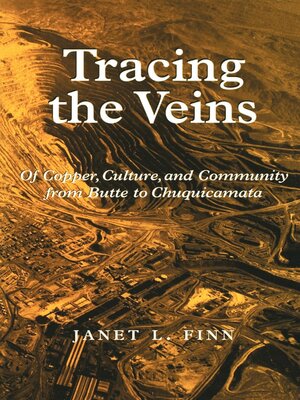Tracing the Veins
ebook ∣ Of Copper, Culture, and Community from Butte to Chuquicamata
By Janet L. Finn

Sign up to save your library
With an OverDrive account, you can save your favorite libraries for at-a-glance information about availability. Find out more about OverDrive accounts.
Find this title in Libby, the library reading app by OverDrive.



Search for a digital library with this title
Title found at these libraries:
| Library Name | Distance |
|---|---|
| Loading... |
This tale of two cities—Butte, Montana, and Chuquicamata, Chile—traces the relationship of capitalism and community across cultural, national, and geographic boundaries. Combining social history with ethnography, Janet Finn shows how the development of copper mining set in motion parallel processes involving distinctive constructions of community, class, and gender in the two widely separated but intimately related sites. While the rich veins of copper in the Rockies and the Andes flowed for the giant Anaconda Company, the miners and their families in both places struggled to make a life as well as a living for themselves.
Miner's consumption, a popular name for silicosis, provides a powerful metaphor for the danger, wasting, and loss that penetrated mining life. Finn explores themes of privation and privilege, trust and betrayal, and offers a new model for community studies that links local culture and global capitalism.
This tale of two cities—Butte, Montana, and Chuquicamata, Chile—traces the relationship of capitalism and community across cultural, national, and geographic boundaries. Combining social history with ethnography, Janet Finn shows how the development of co
Miner's consumption, a popular name for silicosis, provides a powerful metaphor for the danger, wasting, and loss that penetrated mining life. Finn explores themes of privation and privilege, trust and betrayal, and offers a new model for community studies that links local culture and global capitalism.
This tale of two cities—Butte, Montana, and Chuquicamata, Chile—traces the relationship of capitalism and community across cultural, national, and geographic boundaries. Combining social history with ethnography, Janet Finn shows how the development of co







